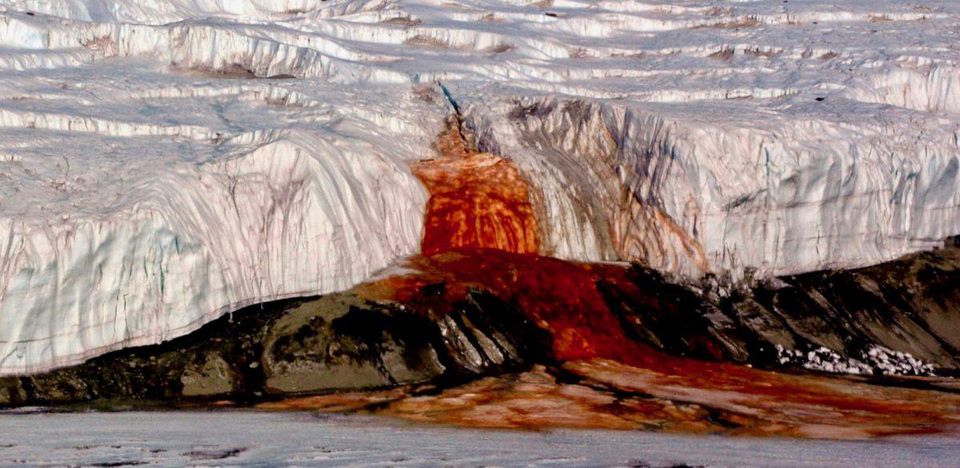The longstanding mystery surrounding Antarctica’s Blood Falls has finally been solved. The deep red falls were first discovered in Antarctica in 1911 where scientists noticed a river had stained the surrounding cliff of ice with a dark red color. Previously, they had believed it was due to algae discoloring the water, however that hypothesis was never verified.

Now, thanks to research by the University of Alaska Fairbanks, we know the true origin of the Blood Falls flowing from the Taylor Glacier. The deep red coloring is due to oxidized iron in brine saltwater, the same process that gives iron a dark red color when it rusts. When the iron bearing saltwater comes into contact with oxygen the iron oxidizes and takes on a red coloring, in effect dying the water to a deep red color.

These microbial communities live in extreme conditions that may resemble the beginning of life on Earth, before oxygen was largely present in the atmosphere. They provide clues as to how life could potentially develop on other planets that lack an oxygen rich atmosphere like Earth. In addition, it provides further evidence of the many ways life can adapt to extreme environments.

Interestingly, the Blood Falls also contains an array of microbes that can survive in extreme conditions. These microbial communities live off sulfates in the water and create energy via sulfate reduction. This is a similar reduction process in which humans convert food to energy but instead of using oxygen these microbes use the less favorable sulfate.

One would initially assume the water should be frozen in place as it sits below a thick column of ice. However, several factors allow the water to remain as a liquid. One is the release of latent heat associated with water freezing, this low amount of heat contributes to keep the water above freezing temperature. In addition, water super-saturated in salt freezes at a lower temperature than fresh water. This is the exact reason cities salt roads in preparation for a winter storm. Lastly, the high pressures at the base of the glacier will have a small impact in reducing the temperature at which water freezes.

The water is sourced from a brine lake beneath the Taylor Glacier, which over time has picked up iron from the underlying bedrock. The iron rich brine, which is under high pressures due to the overlying glacier, is injected through fissures in the glacier as it attempts to make its way toward lower pressures.

The research team transected the glacier in a grid using radio-echo sounding (RES) to map out the features below the glacier. Thankfully, the super saturated brine that makes up the river allows for a stark density contrast in RES compared to the non-saline (fresh) ice.

The research team calculates that the brine water takes approximately 1.5 million years to finally reach the Blood Falls as it makes its way through fissures and channels in the glacier.














0 Comments